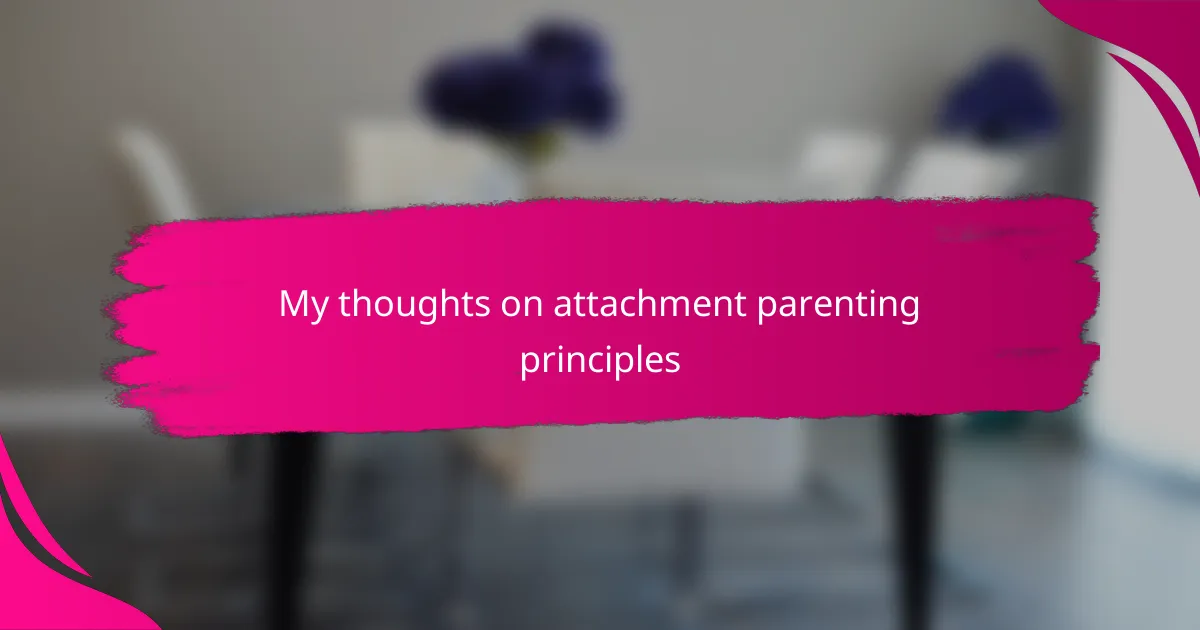Key takeaways
- Attachment parenting fosters a deep emotional bond through responsiveness and empathy, creating a sense of trust and security for children.
- Common challenges include navigating societal judgment and balancing personal needs with parenting demands, requiring patience and self-care.
- Practical techniques like babywearing, co-sleeping, and feeding on demand enhance connection and attentiveness between parent and child.
- The approach evolves through different child stages, adapting to balance closeness with independence as children grow and explore.
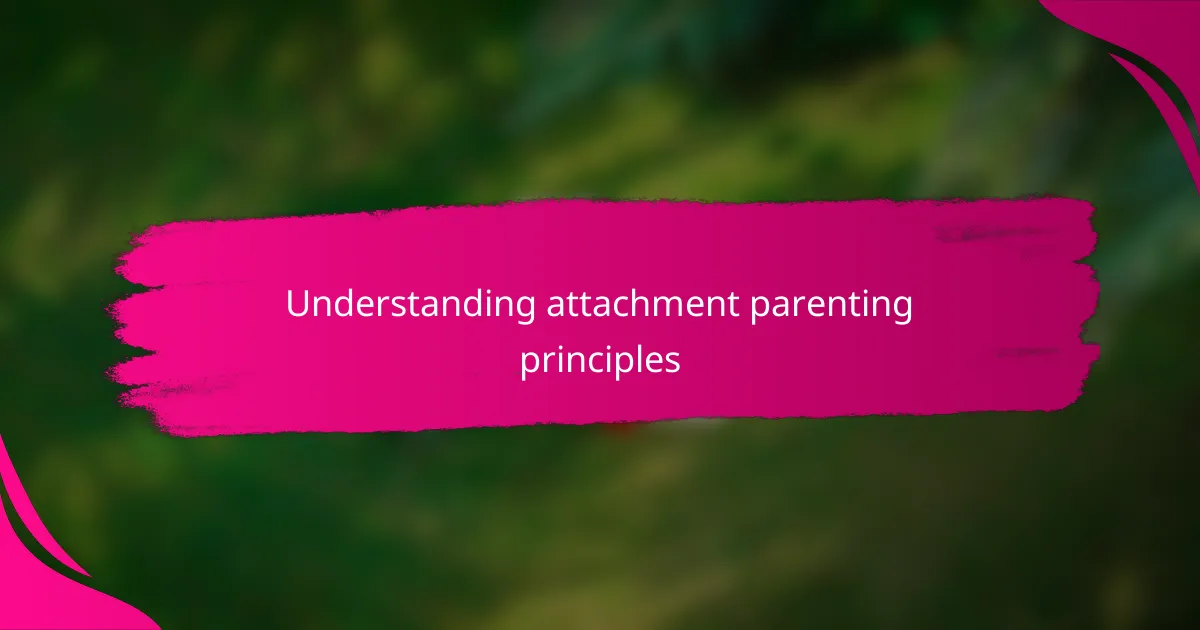
Understanding attachment parenting principles
Attachment parenting centers on building a deep emotional bond with your child, something I’ve seen transform everyday interactions into meaningful connections. Have you ever noticed how responding quickly to a baby’s cries seems exhausting at first, but gradually creates a sense of trust that feels truly priceless? This principle isn’t just about routines—it’s about tuning in to your child’s needs with empathy and presence.
From my experience, attachment parenting encourages parents to trust their instincts while fostering a secure environment where children feel safe and valued. It made me realize that parenting isn’t a checklist but a relationship that grows stronger through gentle responsiveness and patience. When you think about it, isn’t nurturing that sense of security what every child truly needs to thrive?
One thing that stands out to me is how attachment parenting challenges common ideas about independence. Instead of pushing kids away to encourage autonomy, it suggests that safety and closeness lay the groundwork for confident, independent individuals. It makes me wonder—could embracing attachment principles actually make the journey of parenting feel less lonely and more connected?
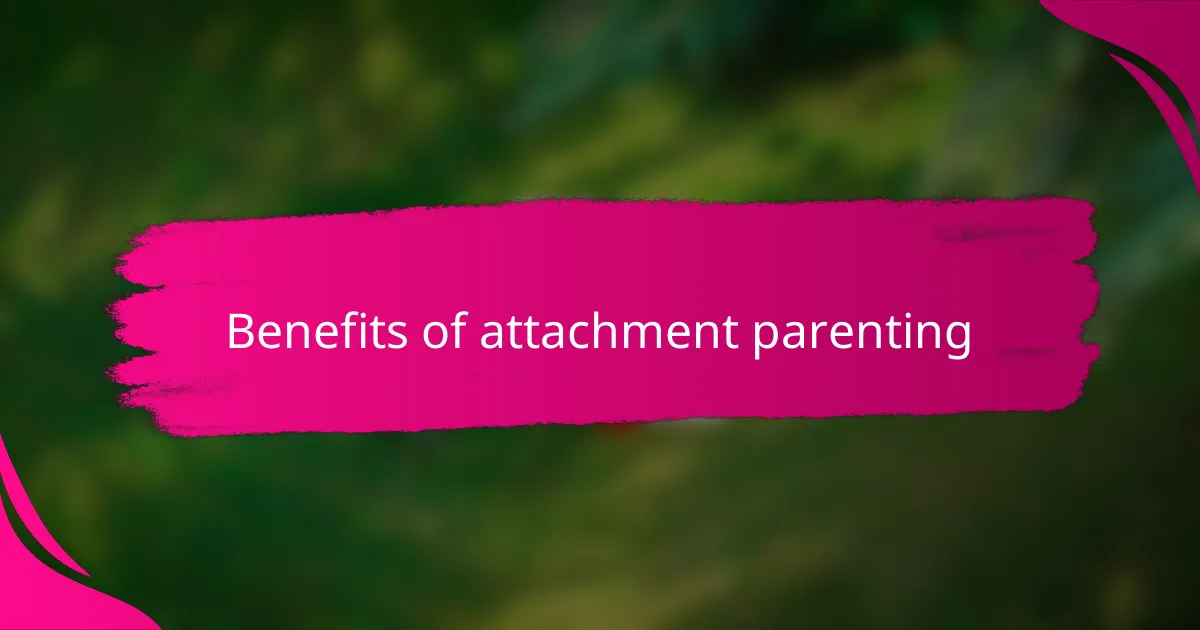
Benefits of attachment parenting
One of the biggest benefits I’ve noticed with attachment parenting is the strong trust it builds between parent and child. When you consistently respond to their needs, children learn that the world is a safe place. It’s like laying a solid foundation that supports their emotional growth in ways that stick with them for life.
I remember those sleepless nights when my baby just cried and cried, and I felt drained. But each time I picked her up and soothed her, I felt this incredible bond forming, almost like a quiet promise that I would always be there. It’s amazing how that reassurance can calm both the child and the parent, creating a peaceful rhythm over time.
Have you ever wondered why some children seem so confident and secure, even in new situations? From what I’ve seen, attachment parenting fosters that inner security by making kids feel truly heard and understood. When children know they can count on their parents, they explore the world with an open heart and a brave spirit.
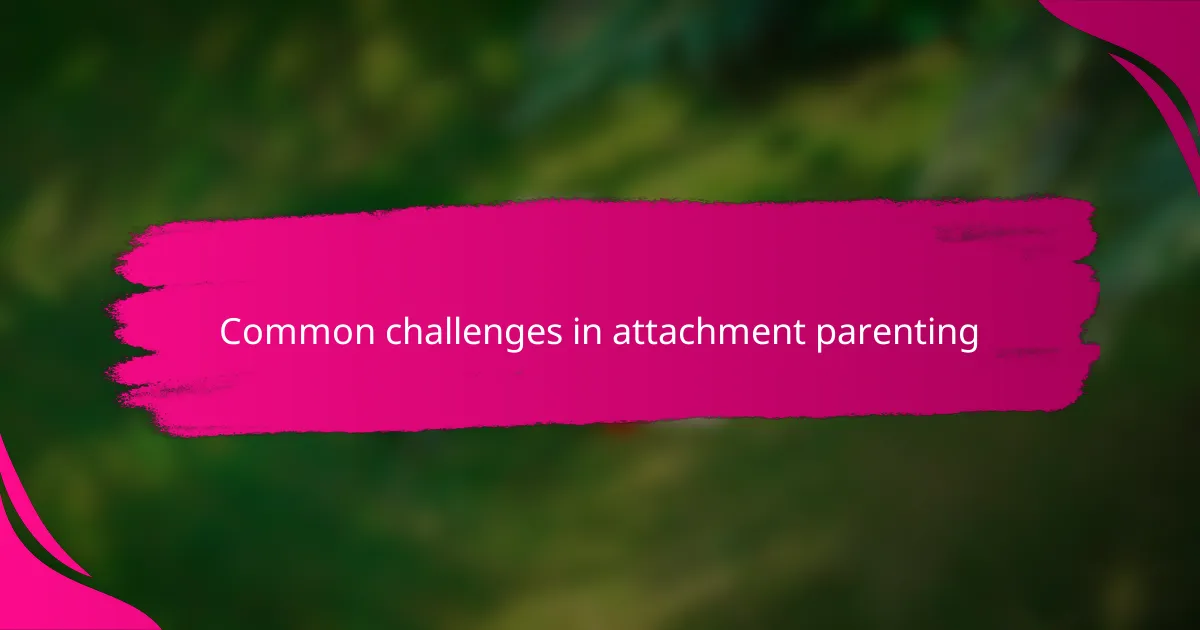
Common challenges in attachment parenting
Sometimes, attachment parenting can feel overwhelming, especially when it demands constant availability. I remember moments when I questioned if I was doing enough, juggling my own needs with my child’s. Have you ever felt that tug-of-war between being present and simply needing a break? It’s a real challenge that many of us face silently.
Then there’s the challenge of societal judgment. When I chose to co-sleep or respond immediately to every cry, I often encountered raised eyebrows or unsolicited advice. It made me wonder—why does parenting feel so scrutinized, especially when we’re just trying to do what feels right for our child? Navigating these external pressures can sometimes shake your confidence.
Lastly, attachment parenting tests patience like few things do. Waiting through endless feedings or soothing sessions can stretch anyone thin. I found that learning to stay calm and compassionate, even when exhausted, was crucial. How do you stay grounded when every day demands so much from your emotional reserves? For me, it’s about remembering the bigger picture—the deep bond that’s growing through these very struggles.
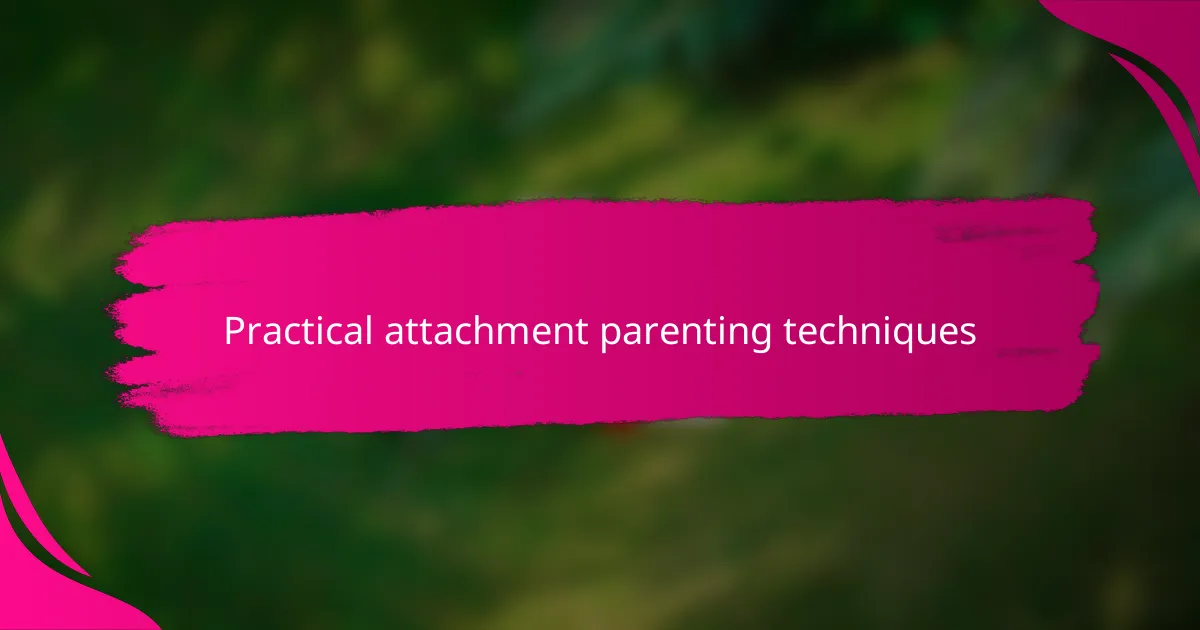
Practical attachment parenting techniques
One practical technique I’ve found invaluable is babywearing. Keeping your child close not only soothes them quickly but also deepens your connection throughout the day. Have you tried wearing your baby during those busy moments? I noticed it transformed my ability to respond with calmness and attentiveness, even when things got hectic.
Another method that resonated deeply with me is co-sleeping. Sharing a sleeping space created a comforting closeness that made nighttime awakenings feel less like interruptions and more like opportunities to reaffirm safety. It made me question why society often discourages this natural closeness when, in reality, it fosters trust in ways that last beyond infancy.
Feeding on demand is something that initially challenged my sense of schedule, but I soon realized how crucial it was for tuning in to my baby’s needs. Instead of rigid timing, following her hunger cues felt like a shared language, strengthening our bond. Have you experienced how this responsiveness can ease feeding struggles and build emotional attunement simultaneously?
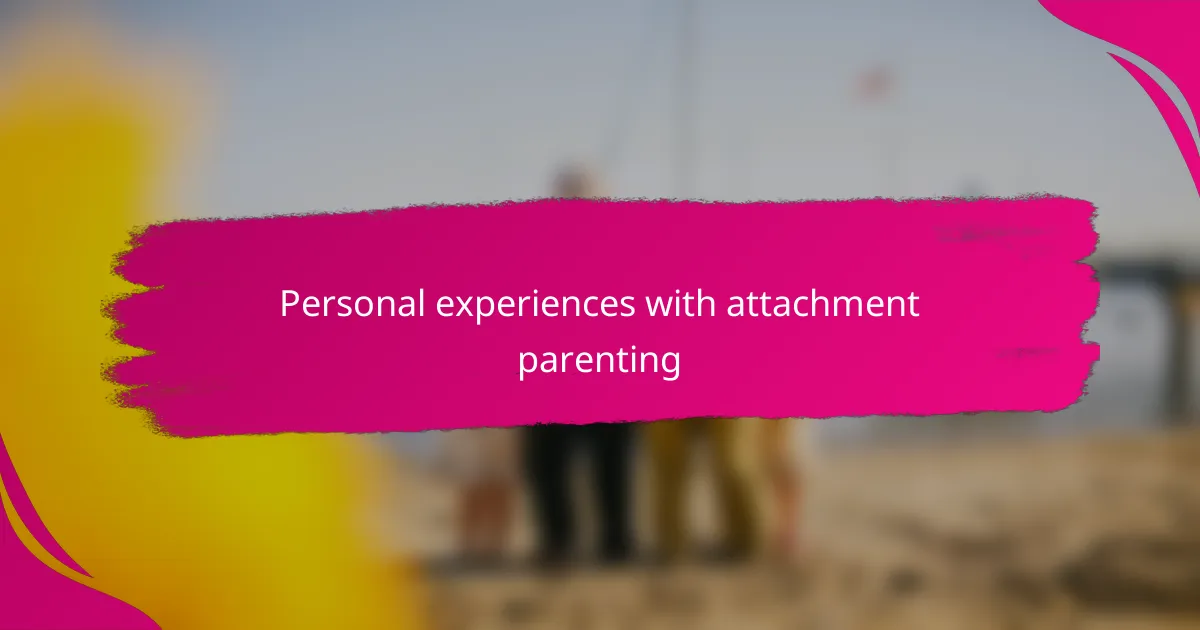
Personal experiences with attachment parenting
There was a time when my toddler became inconsolable after a minor fall, and instinctively, I just held him close instead of pushing for quick independence. That moment taught me how powerful physical closeness can be in soothing not just the child but my own anxious heart as well. Have you noticed how those simple hugs sometimes say more than words ever could?
Sometimes, balancing attachment parenting with the demands of daily life felt like walking a tightrope. I remember feeling torn between responding immediately to all my baby’s needs and stealing a moment just for myself—those small respites became essential for maintaining my emotional stamina. How do you find space for self-care when your little one’s needs feel endless?
One of the most heartwarming parts of this journey has been watching my child develop trust and confidence through our close moments together. I’ve seen how being present during both joyful play and tiring teething phases builds a foundation of security that shines through as they grow. Isn’t it incredible how such early bonds echo through every stage of childhood?
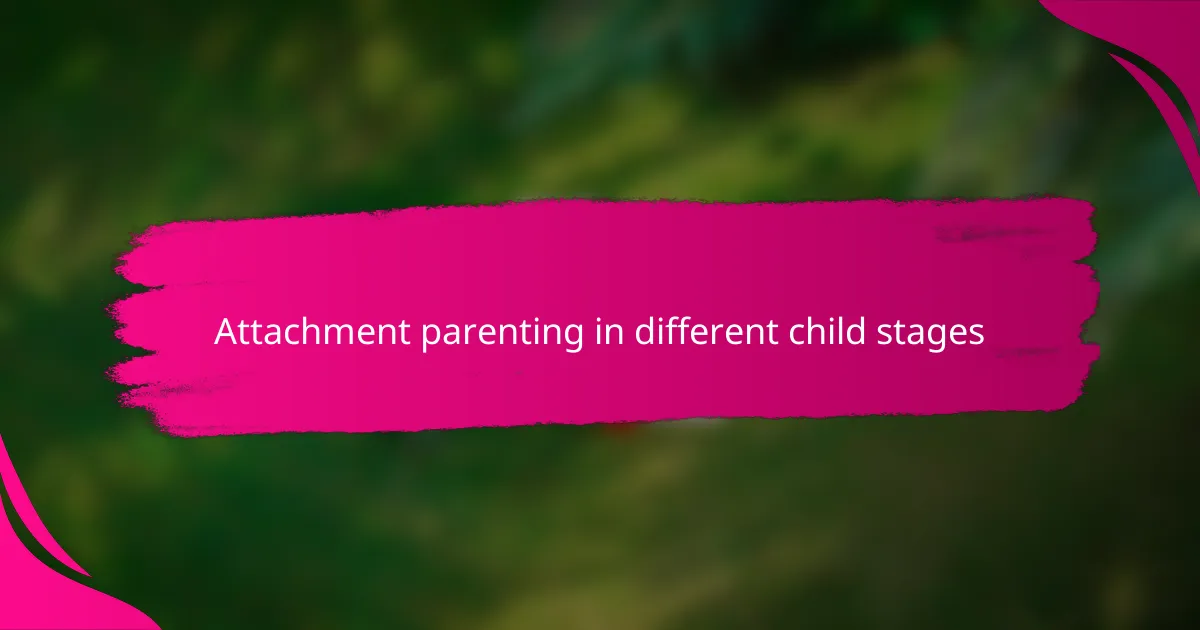
Attachment parenting in different child stages
Attachment parenting naturally evolves as children grow, and I’ve found that each stage brings its own unique rhythm. In infancy, the emphasis is on physical closeness—holding, rocking, and responding instantly—because babies rely entirely on caregivers for comfort. Have you experienced how that early responsiveness feels exhausting yet unbelievably rewarding?
As toddlers begin to explore, attachment parenting shifts to balancing closeness with gentle encouragement of independence. I remember the tug of war between letting my little one wander and staying close enough to soothe doubts. Isn’t it fascinating how security actually fuels curiosity and bravery during those early steps?
When children reach preschool and beyond, the emotional bond deepens through consistent availability and empathetic listening. From my experience, even as they push boundaries, knowing I’m there ready to connect lets them test limits with confidence rather than fear. Have you noticed how a secure base turns challenges into chances for growth?
